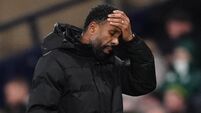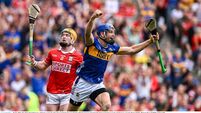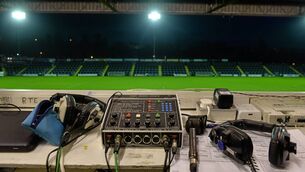Hockey’s goon show set to run and run
On your weekly trip to the cinema the movie Goon may have caught your eye.
It has nothing to do with British radio comedy of the ’50s and everything to do with ice hockey, which has a defined role for the goon, or enforcer.
John Branch of the New York Times spelt out the job specifications of the enforcer for us recently.
“The hockey enforcer is essentially a bodyguard for the other players. When an opposing team starts to get too rough with one of the star players, the enforcer is often sent into the game as a show of force.
“The message is simple: if you want to pick on our star player, you’re going to have to answer to our enforcer.”
Branch recently wrote a superb piece about one such player, Derek Boogaard, once of the New York Rangers (see http://goo.gl/SbV4z).
Boogaard — six foot seven, 18 stone — died last year of an accidental drug overdose while recovering from concussion and after his death was found to be suffering from chronic traumatic encephalopathy. He was 29.
The Canadian’s many career concussions, suffered while fighting as an ice hockey enforcer, have been linked by some observers to his death, though there is no great appetite on the part of the ice hockey establishment to agree that that link exists.
“Because of the increased awareness of concussions across American sports — the difference from a few years ago is astounding — teams are doing a better job tracking and monitoring concussions,” says Branch.
“They test players before the season [a baseline test], and then test them again when a concussion is suspected.
“But serious questions remain over the percentage of concussions that go undetected, whether team trainers have the best interests of the players in mind [or whether they answer to the managers and coaches, desperate for players to return], and whether true neurological damage can be accurately assessed.
“As we see with Boogaard and many others, the brain disease called chronic traumatic encephalopathy [CTE] can be diagnosed only after death.”
Does the NHL have a position on recent deaths such as Boogaard’s?
“Three enforcers died within three-and-a-half months of each other last spring and summer,” says Branch. “Boogaard died of an accidental overdose. The other two were suspected suicides — Canadian officials never released the official causes of death.
“The NHL commissioner Gary Bettman called the spate of deaths of enforcers ‘a coincidence’.
When researching his piece, Branch found Boogaard’s teams — the Minnesota Wild and the Rangers — uncommunicative about their deceased player.
“There is certainly no appetite to address the possible complicity of the teams. Both of Boogaard’s teams, the Wild and the Rangers, would not discuss Boogaard’s medical issues and would not allow team doctors to be interviewed.”
Boogaard’s reputation as an enforcer led to other, unsettling connections. Branch’s article links to a startling video of the NHL star teaching children how to fight just like him.
“In theory, that camp was designed to teach kids, aged from 12 to 18, how to protect themselves when they found themselves in a hockey fight — which most kids will, at some point or another, because that is part of the culture of youth hockey.
“But the camp was regretfully named ‘Boogaard Fighting Camp’ and the logo had blood dripping from the letters.
“Boogaard was famous as a fighter, and the camp tapped into that fame.”
Yet clearly the ‘nuclear deterrent’ aspect of having a goon doesn’t work if there are so many fights. Why doesn’t the NHL just ban fighting?
“The magic question. The NHL says there is no appetite to change the rules of fighting.
“For the record, fighting is penalised — usually five minutes for each player in the penalty box. It is not much of a deterrent.
“It believes it serves as a ‘thermostat’ [Bettman’s word]. In other words, allowing some level of violence helps prevent more serious violence. Left unsaid is that the NHL may be worried about what a lack of fighting would do to its fan base, particularly in Canada, where hockey fighting has a long and admired history.
“But there are plenty of people who argue that the NHL would gain more fans than it would lose by restricting fighting.”
Branch points to the small minority of former players who oppose fighting. “Their voice is growing in volume. One of them, Ken Dryden, is a hockey Hall of Fame player, former NHL executive and member of the Canadian parliament. He is among those keeping the debate going.
“For the first time, perhaps, there is a sense that the debate will not completely fade away.”











